It’s not just for injury prevention after a tough training session at the gym – research shows that stretching can help with the management of stress and anxiety. Find relief with these relaxing stretches, based on yin yoga…
By Eve Boggenpoel
When you’re stretching out tense muscles, chances are you’re either warming up, working on your flexibility or trying to reduce the risk of DOMS (delayed onset muscle soreness), but the benefits of stretching go far beyond prepping for a tough workout. Spending time to do some relaxing stretches every day is a great way to calm an anxious mind, find relief from stress and enhance feelings of safety and security, as more and more Brits are finding out.
Soothing stretch workouts are experiencing a boom in the fitness world, fuelled in part by the ongoing uncertainty and stress surrounding the Covid pandemic. So if you’re keen to find out how stretching can work for you, read on for the latest science-backed ways to stretch away stress.
How does stretching help with stress relief?
In the early stages of lockdown, more than half the population was experiencing anxiety and nearly two-thirds showing signs of depression, according to King’s College London. But the good news is research in the Journal of Behaviour Therapy and Experimental Psychiatry shows it needn’t be that way.
The scientists asked participants to do a series of stretches for muscles groups around the eyes and in the neck, shoulders, chest and arms. Compared to the control groups, as well as feeling calmer and happier, tests showed the stretchers’ breathing had slowed down, their blood pressure was lower and their muscles registered less contraction. So, how did these stretches provide effective stress relief?
‘When you stretch one muscle in the body, this triggers a host of physiological reactions that affect your wellbeing,’ says Gabriella Espinosa, yoga teacher at Movement for Modern Life. ‘This includes increasing blood flow and oxygen to the muscle area, hydrating the surrounding connective tissue and releasing feel-good chemicals such as endorphins.’
Stretching lowers your stress hormones
According to a 2020 study in the Journal of Sports Science and Medicine, just one 90-minute yoga class can actively lower stress hormones and kickstart your parasympathetic nervous system (PNS). If you’re not sure what your PNS does, here’s the science bit. You’re probably familiar with the term fight or flight, which is when one branch of your nervous system – the sympathetic nervous system (SNS) – pumps out adrenaline and cortisol, so your body can deliver extra oxygen to your muscles, enabling you to fight an attacker or make a quick getaway.
The trouble is, the part of the brain that activates the SNS, the amygdala, isn’t very discerning so also kicks into action for stresses that don’t need heaps of adrenaline, such as staying home all day due to Covid. This leaves your body with excess circulating levels of adrenaline and cortisol, and you feeling stressed and wired. Fortunately, the PNS acts like a brake, bringing your body back into a calm and relaxed state.
‘Any activity that helps you mentally or physically relax will lower cortisol and blood pressure, and get your body out of operating in your SNS and into your PNS,’ says Dan Roberts, head coach and founder of The Dan Roberts Group. But the type of stretching you do is important – too demanding and you’re likely to activate your system rather than relax it.
‘Generally, you want to stretch in a way that doesn’t let your heart rate get too high,’ says Roberts. ‘So doing intensive dynamic or ballistic stretching will probably not be as effective. If you really want to recharge and recover, it’s probably best to do static stretching and at an eight-out-of-10 level of intensity. For most of us, doing a slow stretching session for 20 minutes before we go to bed will help us return to our PNS state.’
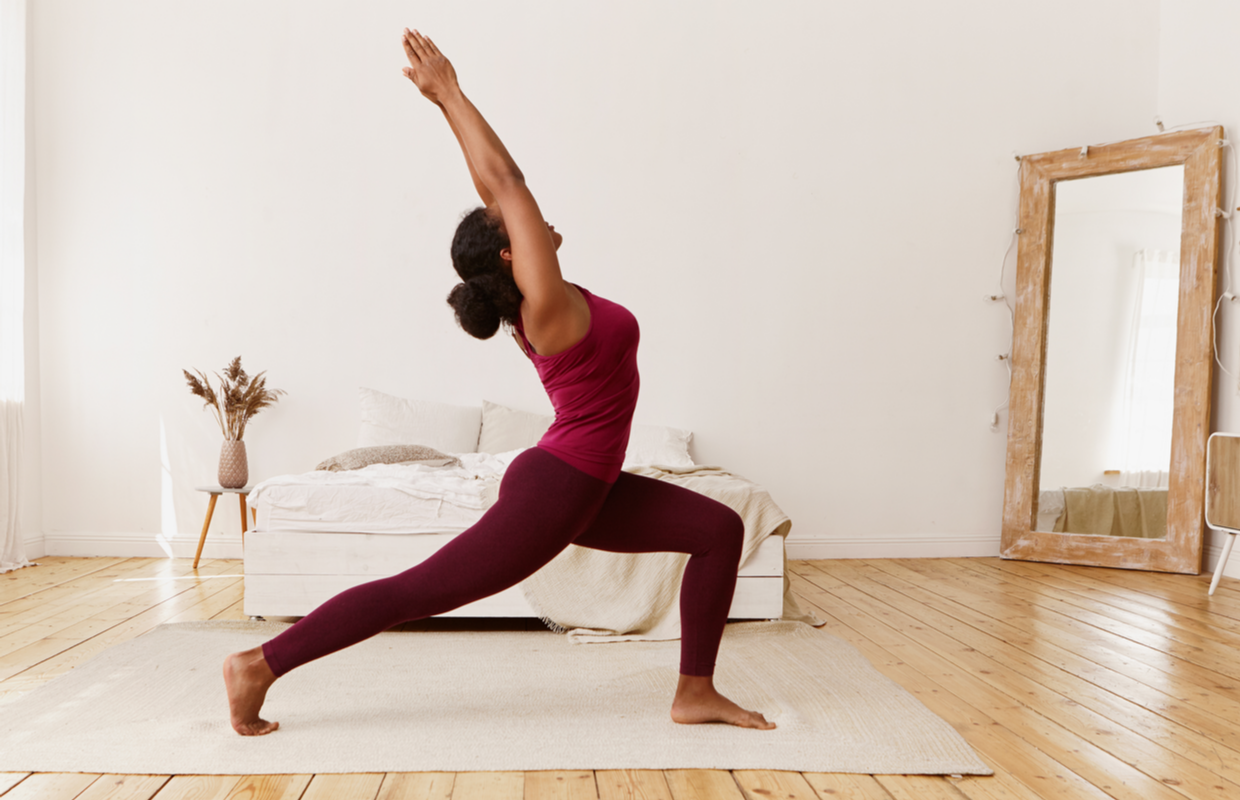
Stimulate your vagus nerve with stretches
Another way to maximise the stress relief benefits of your stretches is to do moves that stimulate your vagus nerve. Originating in your brain stem, it’s the longest and most complex of your cranial nerves. It travels through your face, throat, neck, heart, lungs, diaphragm and gastrointestinal organs, through to your pelvic floor.
‘Your vagus nerve acts as a “super information highway”, communicating between your brain and body systems. It helps with the regulation of your mood, digestion, heart rate, immune response and much more,’ says Espinosa. It also directly activates your PNS.
If you’re doing yoga at home and want to experience the calming influence of your vagus nerve, try incorporating more forward bends into your practice. ‘Forward bends are wonderful for creating length and space in the spine, which forms a key part of your central nervous system, relaying messages of what’s going on in your body to your brain,’ adds Espinosa. Try standing forward folds and seated postures such as head-to- knee pose and cobbler’s pose.
Combine stretches with breathing techniques to reduce stress
To enhance the stress relief benefits of stretching, try incorporating breathing techniques into your stretches…
‘The vagus nerve runs down through the respiratory diaphragm, so engaging in slow deep breathing – and making your exhale longer than your inhale – stimulates the vagus, lowering blood pressure and heart rate, and shifting you into a parasympathetic state,’ says Espinosa. ‘Try Box Breathing: Inhale for four counts, pause, then exhale slowly for eight counts, pause. Repeat five-to-10 times, either sitting or lying down.’
Another way to activate the vagus nerve with the outbreath is to use a stretching technique called pandiculation. ‘This is a natural response of your nervous system,’ says Jennilee Toner, anatomy specialist and yoga teacher at EkhartYoga. ‘When your body is at rest, it has a biofeedback loop that lets your brain know how tight your muscles are, so it can reset’. Pandiculation incorporates whole-body tensing while stretching and yawning.
5 stretches for stress relief
Calm anxiety and boost resilience with these moves based on yin yoga, which focuses on stretching tissues that are often neglected in normal stretch routines, such as tendons, ligaments and fascia.
The stretches for stress relief in this sequence will open your back, shoulders, chest, hips and hip flexors and legs. Hold each pose for up to five minutes, then release your body (especially your spine and hips) by moving in whichever way you feel it needs.
Before you begin the sequence, prepare your body with a few rounds of cat/cow. Remember to rest in savasana afterwards, so that you absorb the stress-relief benefits of your stretching practice.
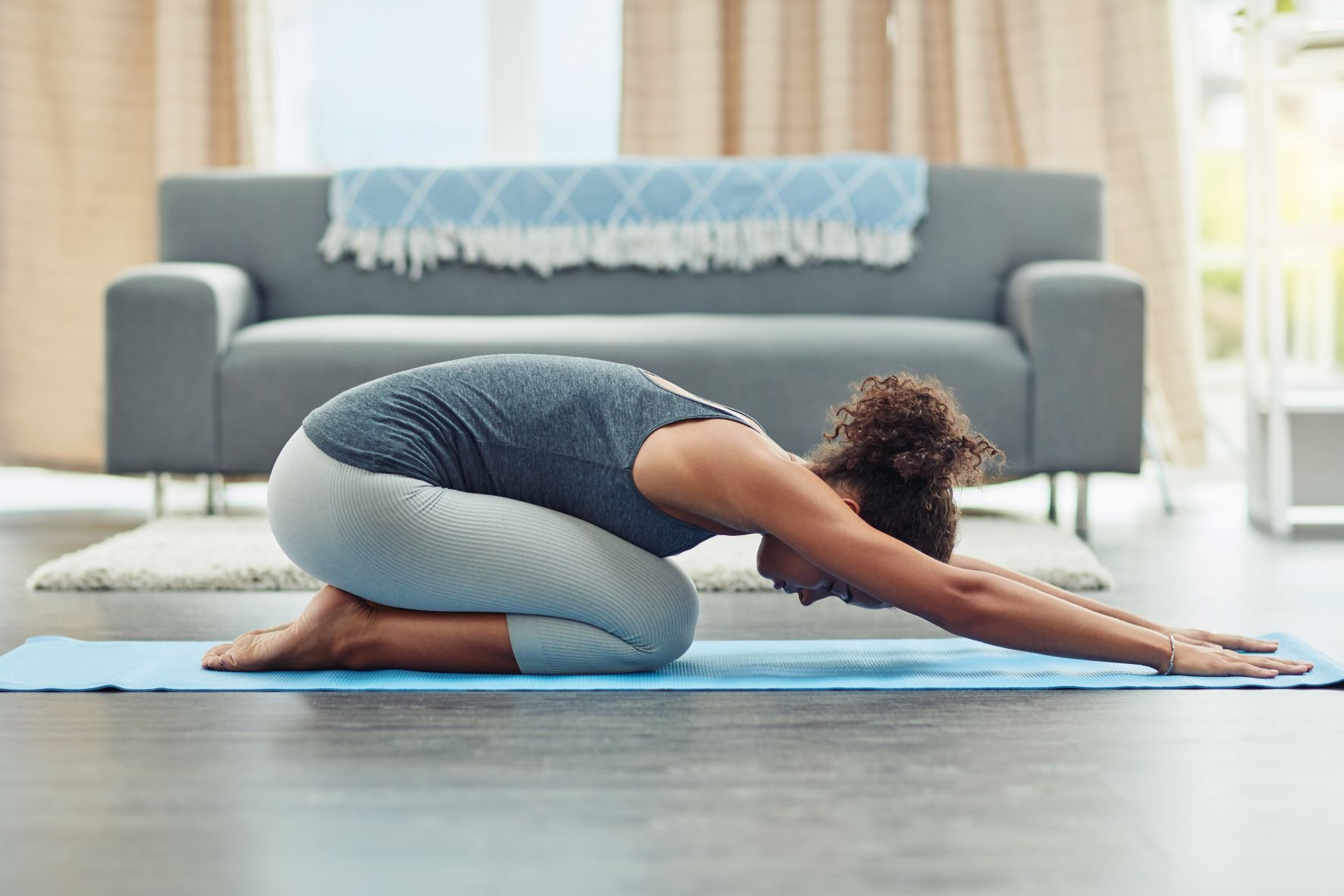
1. Child’s pose
Hold for 3-5 minutes
Sitting with knees wide and toes together, fold forwards to gently rest your forehead on the floor, arms outstretched. Breathe deeply and evenly into your back body.
Up the stress-relief factor of this stretch: Drape your body over a bolster (or pillow) placed lengthways on your mat.
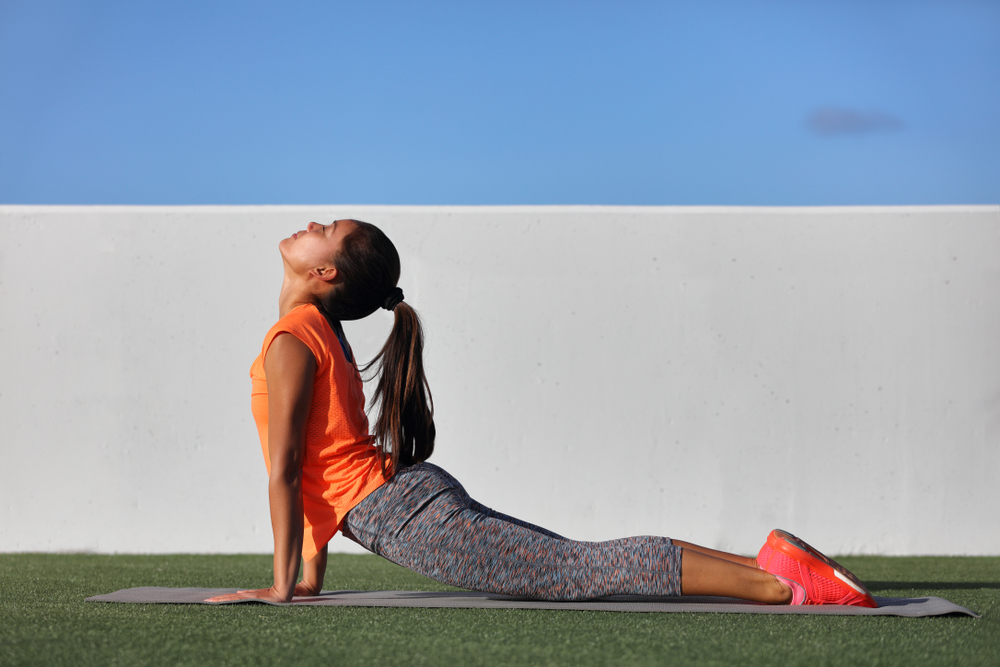
2. Sphinx
Hold for up to 5 minutes
Lie on your stomach and relax your buttocks and legs. Take your upper body weight onto your hands or forearms, hands shoulder-width apart. Then, gently press into the ground so you don’t sink into your shoulders.
Up the stress-relief factor of this stretch: Rest your forearms on blocks or a bolster.
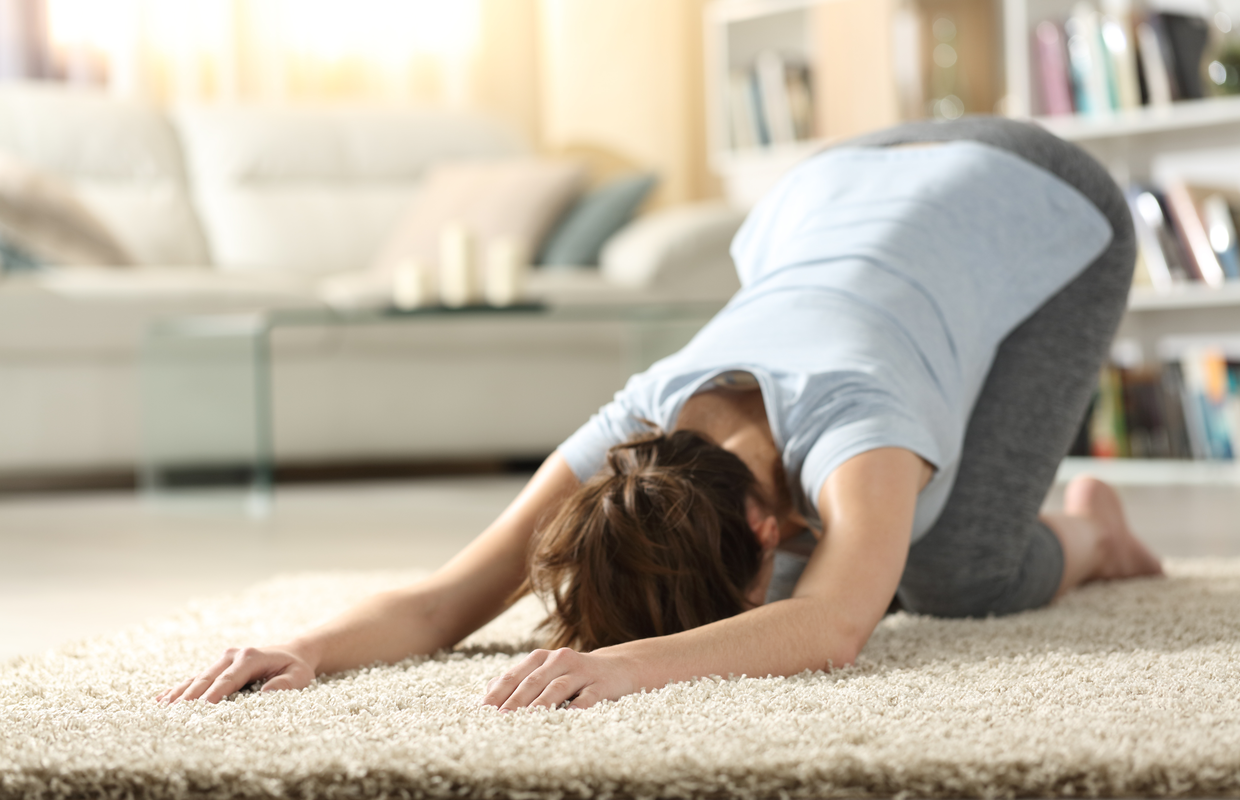
3. Melting heart
Hold for 3-5 minutes
From all fours, walk your hands forwards until your body is in a line from your tailbone to your fingertips. Allow your chest to sink to the floor. Aim to keep your hips above your knees.
Up the stress-relief factor of this stretch: Rest your head on the end of a bolster placed lengthways between your hands.
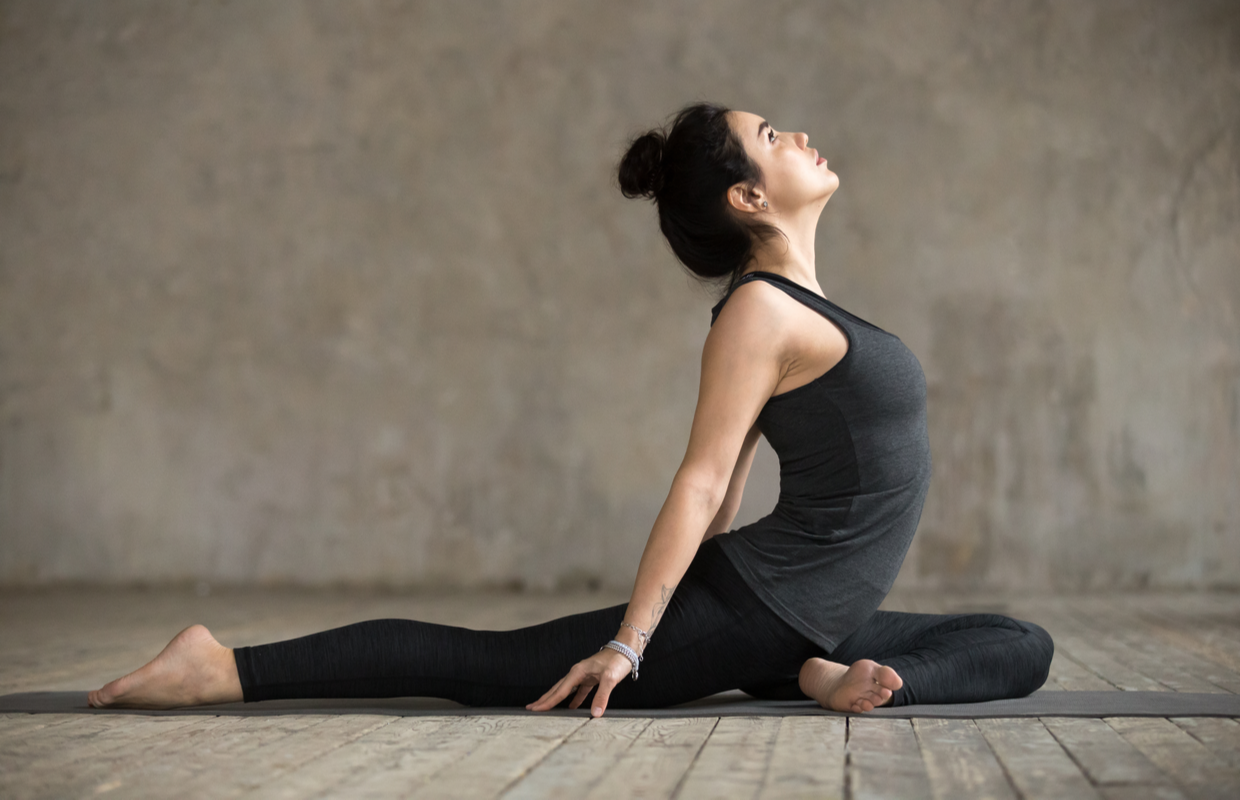
4. Swan
Hold for 1-3 minutes, followed by 2 minutes in sleeping swan
From all fours, place your left knee close to your left wrist. Then, take your left heel under your right hip. Slide your right leg straight behind you. Root into your hands and allow your left hip to sink towards the floor. Fold forwards into sleeping swan, then repeat on the other side.
Up the stress-relief factor of this stretch: To make sleeping swan even more relaxing, rest your forehead on your hands or on a bolster placed crosswise on your mat.
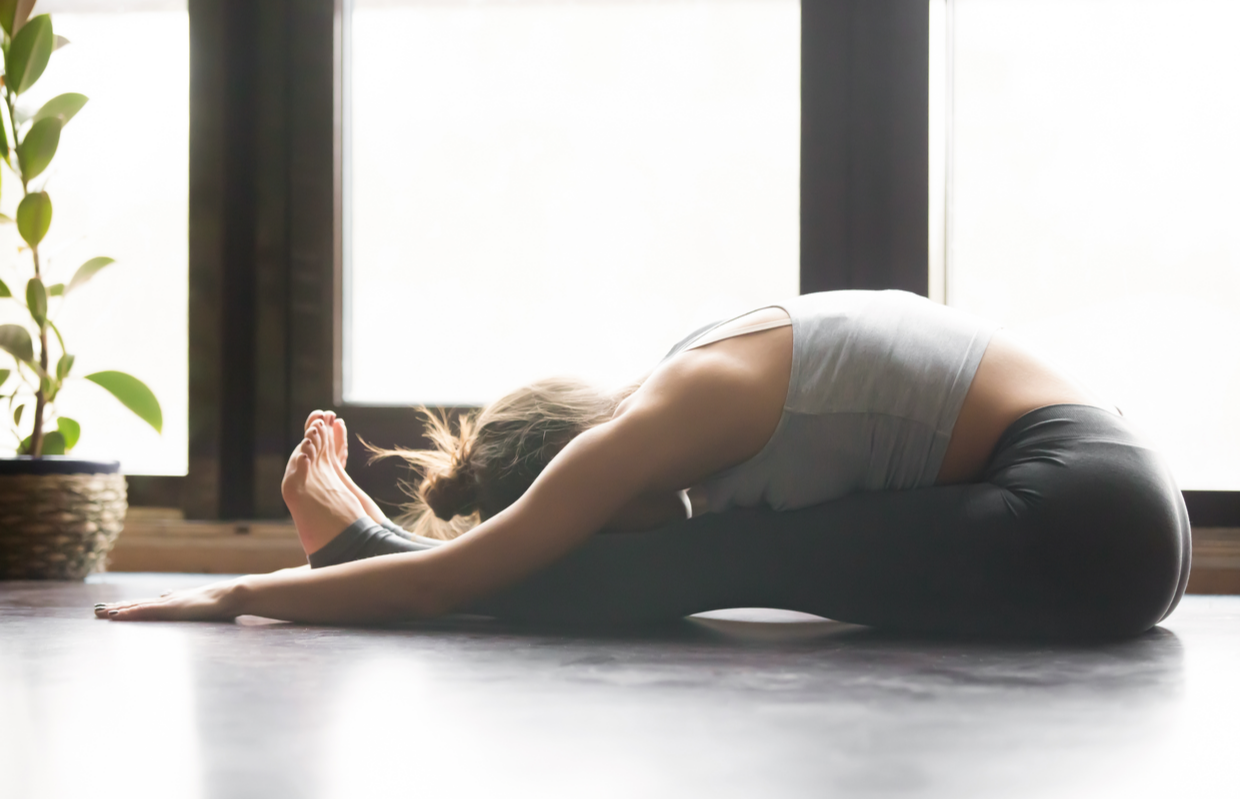
5. Caterpillar
Hold for 3-5 minutes
Known as seated forward fold in yang yoga, sit on a low block or cushion with your legs stretched out in front of you. Reach your hands to your feet and fold forwards, letting your back round.
Up the stress-relief factor of this stretch: If your hamstrings are tight, place a bolster beneath your knees. Alternatively, rest your head on a bolster.







